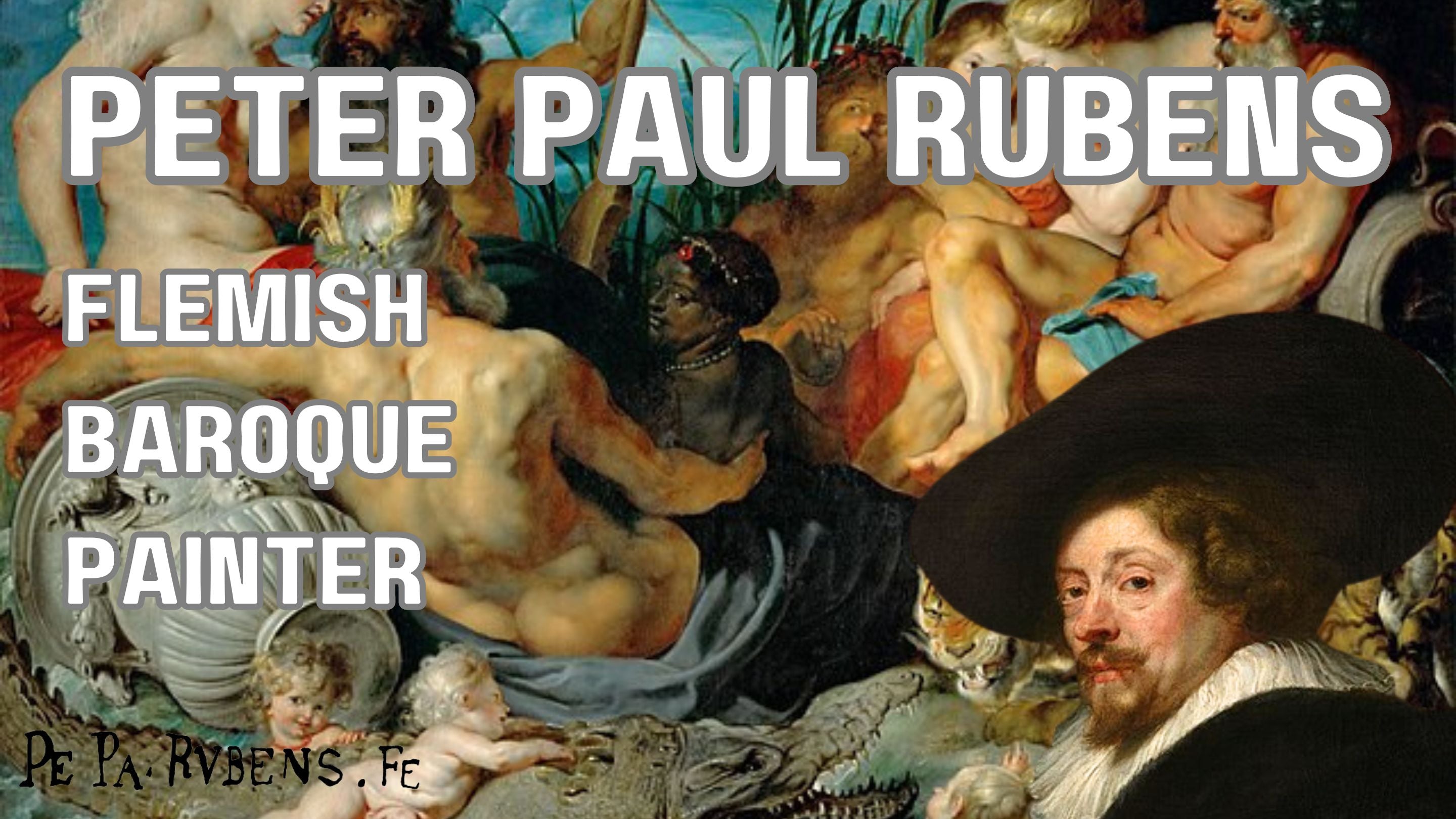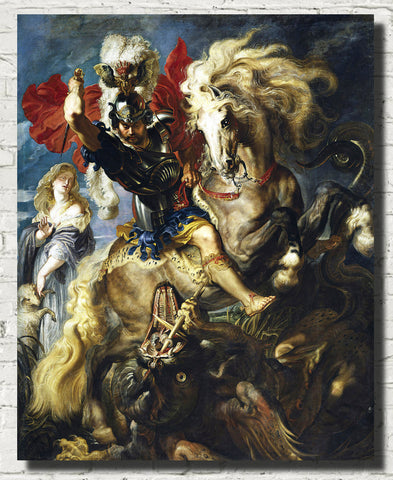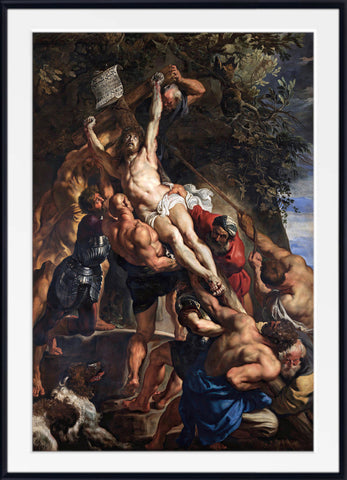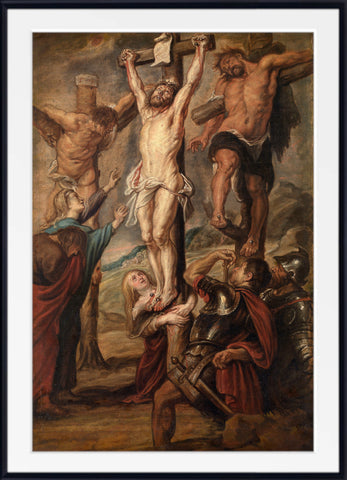Table of Contents:[hide]
Peter Paul Rubens: A Flemish Master of Baroque Art
Peter Paul Rubens was a Flemish painter, printmaker, and diplomat who is considered one of the most influential artists of the Baroque era. He is known for his dynamic compositions, vivid colors, and mastery of light and shadow. His paintings often depict religious, mythological, and historical subjects, as well as portraits and landscapes.
Early Life and Training
Born in Siegen, Westphalia, Germany, in 1577, Peter Paul Rubens's early life was marked by both privilege and tragedy. His father, Jan Rubens, was a successful lawyer who served as a counselor to William the Silent, Prince of Orange. However, Jan's involvement in the political turmoil of the time led to his imprisonment and eventual death when Rubens was just eight years old.
Despite this loss, Rubens's mother, Maria de Aken, provided him with a comfortable upbringing and encouraged his artistic talents. At the age of 14, Rubens began his formal training as a painter in Antwerp, the cultural and commercial hub of the Spanish Netherlands. He studied under various masters, including Tobias Verhaeght, Frans Floris, and Adam van Noort.
A Journey to Italy and Artistic Maturity
In 1600, Rubens embarked on a journey to Italy, a pivotal moment in his artistic development. He spent eight years in Italy, immersing himself in the works of the Renaissance masters, particularly Michelangelo, Raphael, and Titian. From these masters, Rubens absorbed the principles of classical composition, anatomy, and perspective, which he would later integrate into his own dynamic and expressive style.
Upon returning to Antwerp in 1608, Rubens was welcomed as a leading figure in the city's thriving art scene. He established a successful workshop and quickly gained the patronage of prominent figures, including the Archduke Albert and Archduchess Isabella, the governors of the Spanish Netherlands.
A Master of Diverse Subjects
Rubens's artistic repertoire was remarkably diverse, encompassing a wide range of subjects, from religious and mythological scenes to portraits and landscapes. He possessed an exceptional ability to capture the drama and emotion of his chosen subjects, imbuing his figures with vitality and movement.
In his religious paintings, Rubens often depicted scenes of martyrdom, miracles, and divine interventions, conveying the power and majesty of the Christian faith. His mythological paintings, inspired by classical literature, showcased his mastery of storytelling and his ability to bring mythical characters to life.
Rubens was also a skilled portraitist, capturing the essence of his subjects with psychological depth and realism. His portraits of aristocrats, merchants, and family members reveal his keen observation of human nature and his ability to convey both dignity and emotion.
A Diplomatic Role Alongside Artistic Excellence
In addition to his artistic achievements, Rubens also played a significant role in diplomacy. His fluency in multiple languages, his knowledge of European politics, and his personal charm made him an ideal ambassador for the Spanish Netherlands.
In 1621, Rubens was appointed court painter to Archduchess Isabella, and he subsequently served as a diplomatic envoy to England and France. His diplomatic skills proved invaluable in negotiating peace treaties and resolving conflicts between the Spanish monarchy and other European powers.
Legacy of a Baroque Master
Peter Paul Rubens died in Antwerp in 1640, leaving behind a rich legacy of art and diplomacy. He is widely regarded as one of the most influential artists of the Baroque era, and his works continue to inspire and captivate art lovers around the world.
Rubens's artistic legacy is characterized by his dynamic compositions, vivid colors, and mastery of light and shadow. He was a true virtuoso of oil painting, capable of creating a sense of movement, depth, and texture on canvas. His ability to capture the human form with anatomical precision and emotional resonance further solidified his reputation as a master of his craft.
Beyond his artistic achievements, Rubens's diplomatic contributions played a crucial role in maintaining peace and stability in Europe during a period of political and religious turmoil. His ability to bridge cultural divides and negotiate between opposing powers demonstrated his versatility and his commitment to diplomacy as a means of achieving peace.
Peter Paul Rubens remains a towering figure in the history of art, his legacy spanning not only the realm of artistic expression but also the world of diplomacy. His works continue to inspire and challenge viewers, while his diplomatic achievements serve as a reminder of the power of dialogue and understanding in resolving conflict.
FAQ: Peter Paul Rubens, A Flemish Master of Baroque Art
Q1. What are some of the key characteristics of Peter Paul Rubens's style?
Peter Paul Rubens's style is characterized by its dynamic energy, vivid colors, and mastery of light and shadow. His paintings are often complex and crowded with figures, but they are also carefully balanced and harmonious. He often used a technique called "impasto," in which he applied thick layers of paint to create a sense of texture and depth.
Q2. What are some of Rubens's most famous paintings?
Some of Rubens's most famous paintings include:
Q3. What were Rubens's sources of inspiration?
Rubens was inspired by a wide range of sources, including:
- Classical art and literature
- The works of Renaissance masters such as Michelangelo, Raphael, and Titian
- Flemish painting traditions
- Contemporary events and political figures
Q4. What was Rubens's role in diplomacy?
Rubens was a skilled diplomat and was often sent on diplomatic missions to England and France. He used his diplomatic skills to help resolve conflicts between the Spanish monarchy and other European powers.
Q5. What is Rubens's legacy?
Peter Paul Rubens is widely regarded as one of the most influential artists of the Baroque era. His works continue to inspire and captivate art lovers around the world. He is also remembered for his diplomatic achievements, and he is considered one of the most important figures in the history of Flemish art.




